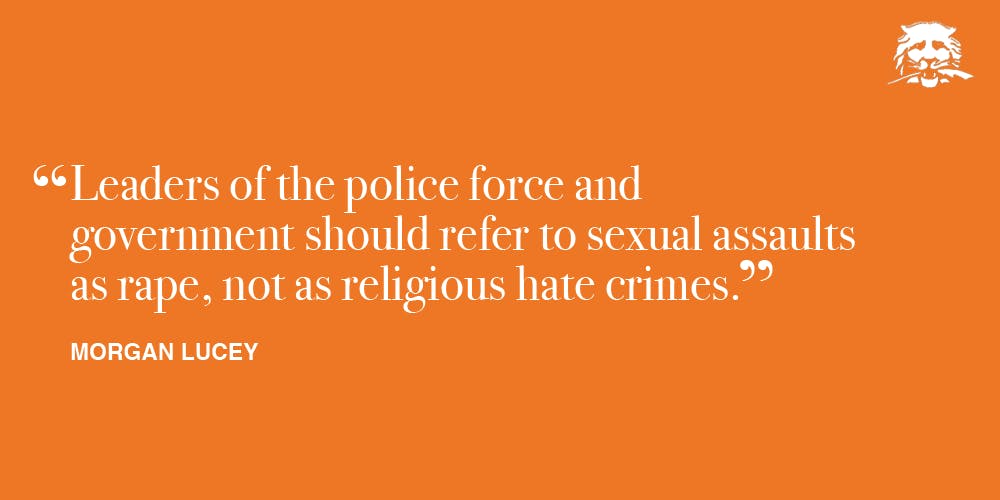In early January, Asifa Bano, an 8-year-old girl in Northern India, was repeatedly raped and then murdered after being taken from a meadow where her cows were grazing. Bano was a member of the Bakarwals, a tribe of nomads who wander Northern India and purchase leases on land for their herds. In recent years, there has been a rise of anti-Bakarwal sentiment among the Hindu people in the Northern Kathua region. Police believe that the crime against Bano was perpetrated by at least three men in a nearby temple owned by an anti-Bakarwal leader. As a result, many sources have called Bano’s rape a hate crime against the Muslim Bakarwal people, meant to drive them out of their land. However, this label of a religious hate crime shifts focus from what the crime actually was: the rape of a young girl, in a country where this is far too common.
Allegedly, the culprits confessed to targeting the young girl to drive away the other members of the Bakarwal tribe. However, the fact that they targeted a young girl through sexual violence, rather than murdering any member of the tribe without rape, points to the larger issue of sexual violence against women. There is a prevalent culture of acceptance of sexual violence against women in India, and it persists despite repeated outrage over various incidents. Some speculate that the rape culture stems from the caste system, which strongly values men over women. Others argue that it could also be caused by interpretations of Hindu religious scripture, in which deceit and rape against female characters is common. No matter what the cause, the threat of sexual violence haunts Indian women, especially given that the victims themselves are often blamed without any justice.
The leaders of the Indian government are responsible for the misappropriation of blame from the perpetrators to the victims, who often lack a voice in the criminal proceedings due to social invisibility or incapacitation. Up until this past week, Bano’s rape and murder had not garnered much attention; the only reason it come into public focus now is that a group of male police officers, the majority of whom were Muslim or openly sympathetic to the Bakarwals, were affected. A group of Hindu lawyers had physically prevented them from trying to file her case at a courthouse. This event was reported in major newspapers, as the conflict between the lawyers and police officers displays a rift between Hindu and Muslim populations. On the other hand, the rape itself did not make headlines, despite its tragedy and brutality. It seems that for the government, the rape and murder of an 8-year-old girl was not worth addressing until it became an issue of religion. By failing to address the crime until it became an interfaith conflict, the case of Bano’s rape has become another example of the divide between Muslim and Hindu populations in India, rather than an example of the persistent rape culture.
The religious divide in India is certainly a significant problem, and it needs to be addressed. But using Asifa Bano as an example through which to protest religious divisions shifts focus away from the more urgent threat of sexual violence that women in India face on a daily basis. Women in India face the daily threat of sexual assault every time they step out of their front doors, whether or not they are accompanied. This threat affects the quality of life and and subsequent actions of women, putting it at the top of the list of priorities for resolution. As a result of this and similar misrepresentations of issues of sexual violence, the efforts to educate men about sexual assault are largely self-selecting and may not actually target the men who are likely to commit these assaults or the women who are most at risk. For example, efforts are being made to educate women on how to fight back: A recent effort by New Delhi police to host self-defense classes for women represents major progress in empowering women to commandeer autonomy over their own bodies. The same agency that teaches the self-defense classes also offers a course for men on how to help women who are being attacked. However, the men who sign up for such a course on how to prevent sexual assault are unlikely to be perpetrators themselves. Because of this, the course will do little to change the culture of sexual violence, even if it serves to decrease the rates of sexual assault. Thus, there must be a widespread effort by the Indian government to change the rape culture, through demonstrations of just punishment for perpetrators and mandated education on gender equality for all men.
The first step of creating this change is allowing discourse specifically focusing on sexual violence against women to take root in the Indian government without shifting public focus onto other issues. Leaders of the police force and government should refer to sexual assaults as rape, not as religious hate crimes. Similarly, the general population should be allowed to discuss these cases without retribution or fear of social stigma. Victims are not to blame. As an extension to the sexual assault prevention courses discussed above, primary and secondary education in India should focus on eradicating victim-blaming through educating children on the factors that actually lead to rape. This will represent a recognition of what rape actually is: not just a hate crime against a certain ethnic group or caste but a hate crime against women.
Morgan Lucey is a junior studying neuroscience from Scottsdale, Ariz. She can be reached at mslucey@princeton.edu.









